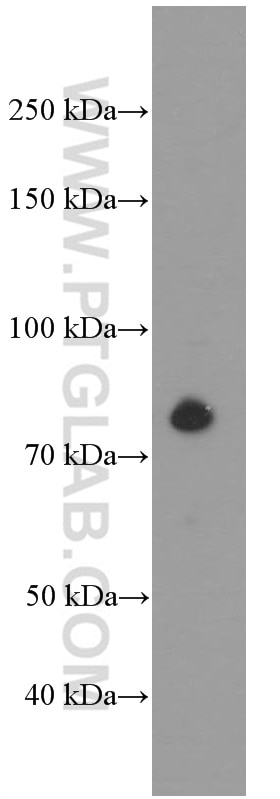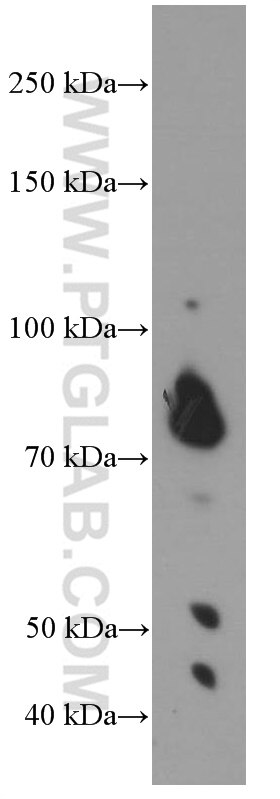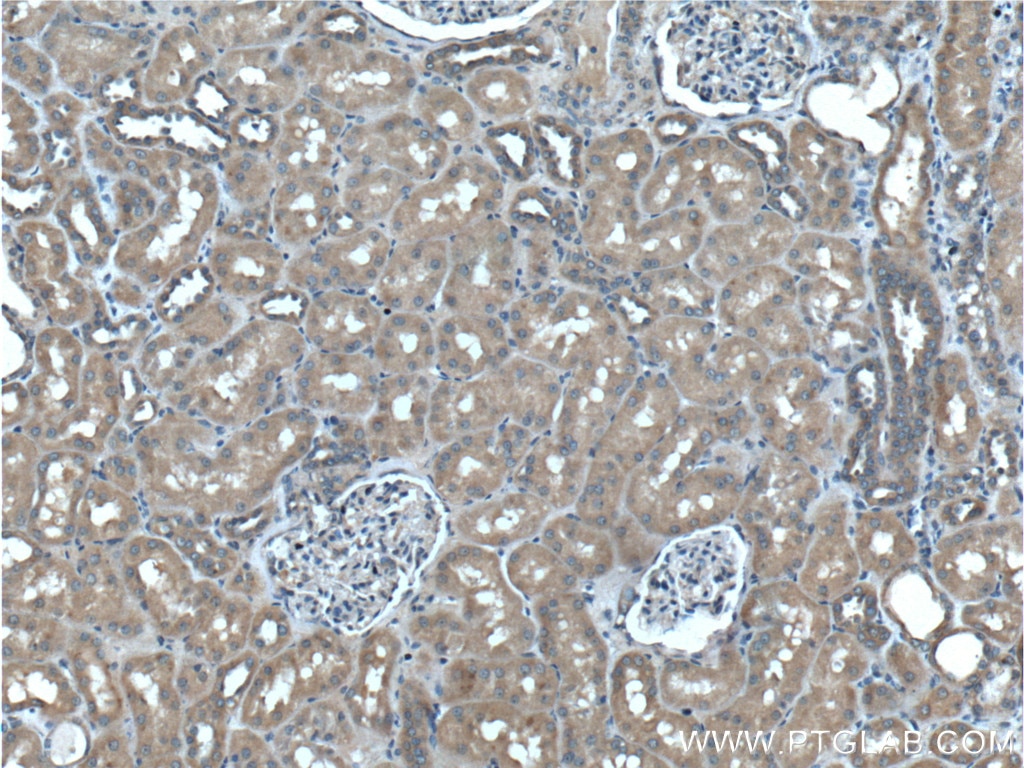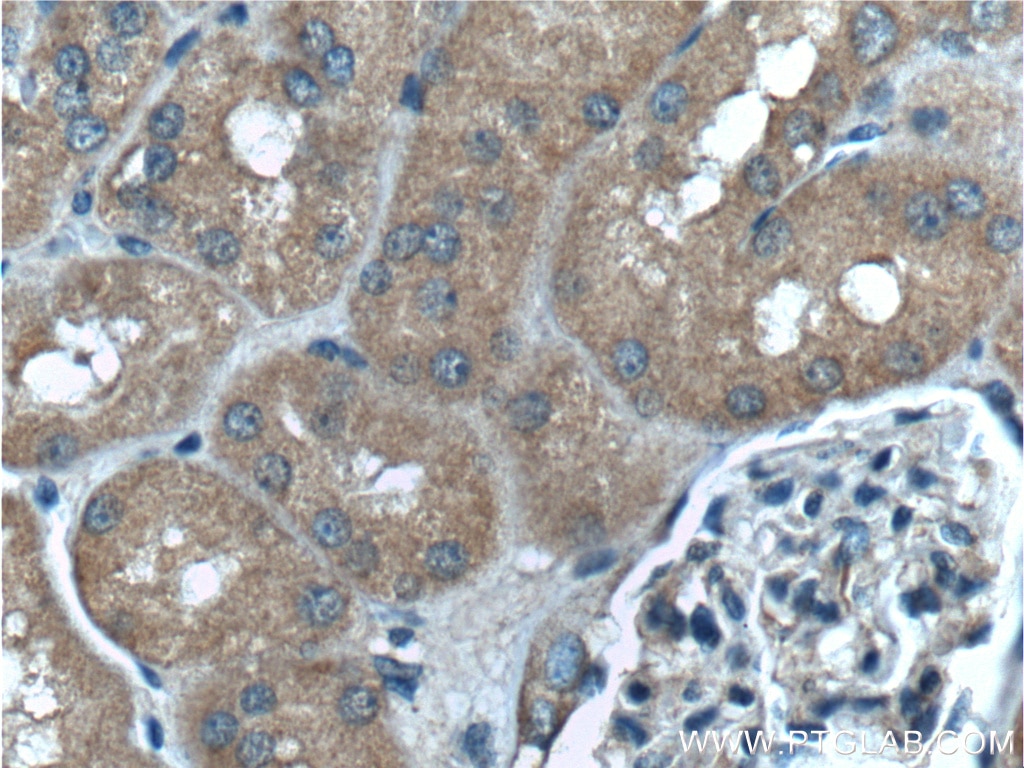- Phare
- Validé par KD/KO
Anticorps Monoclonal anti-PLAA
PLAA Monoclonal Antibody for WB, IHC, Indirect ELISA
Hôte / Isotype
Mouse / IgG1
Réactivité testée
Humain, rat, souris
Applications
WB, IHC, Indirect ELISA
Conjugaison
Non conjugué
CloneNo.
5C10G9
N° de cat : 60244-1-PBS
Synonymes
Galerie de données de validation
Informations sur le produit
60244-1-PBS cible PLAA dans les applications de WB, IHC, Indirect ELISA et montre une réactivité avec des échantillons Humain, rat, souris
| Réactivité | Humain, rat, souris |
| Hôte / Isotype | Mouse / IgG1 |
| Clonalité | Monoclonal |
| Type | Anticorps |
| Immunogène | PLAA Protéine recombinante Ag3224 |
| Nom complet | phospholipase A2-activating protein |
| Masse moléculaire calculée | 738 aa, 81 kDa |
| Poids moléculaire observé | 75-80 kDa |
| Numéro d’acquisition GenBank | BC032551 |
| Symbole du gène | PLAA |
| Identification du gène (NCBI) | 9373 |
| Conjugaison | Non conjugué |
| Forme | Liquide |
| Méthode de purification | Purification par protéine A |
| Tampon de stockage | PBS only |
| Conditions de stockage | Store at -80°C. 20ul contiennent 0,1% de BSA. |
Informations générales
Phospholipase A-2-activating protein (PLAA), also named PLAP, can interact with ubiquitin and is involved in the maintenance of ubiquitin levels. PLAA contains multiple consensus domains including WD repeats, PFU domain and PUL domain. Although the function of PLAA remains unclear, ubiquitin binding of PLAA might be the central role that connects ubiquitination and degradation in ERAD. Recent finding revealed that PLAA served as a novel nociveptive mediator after incision, and its expression level is regulated by miR-203.















